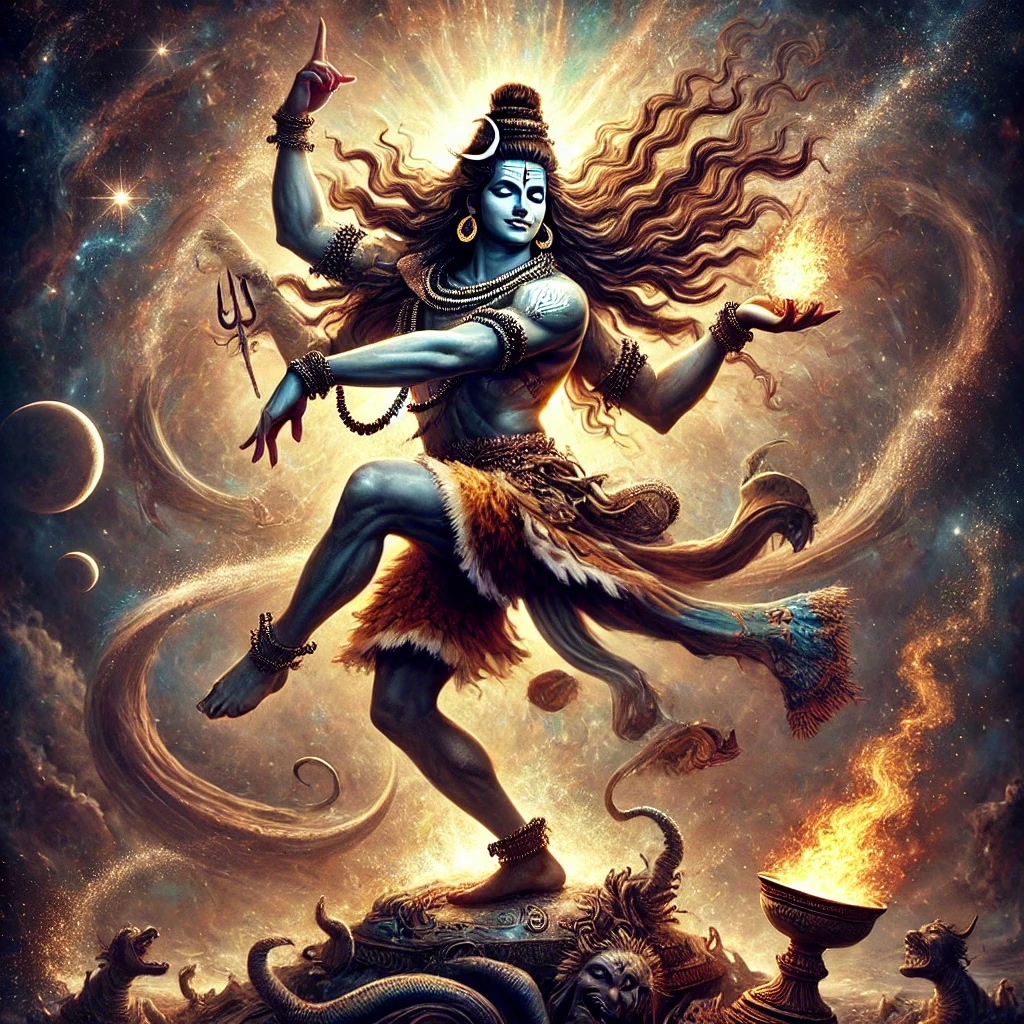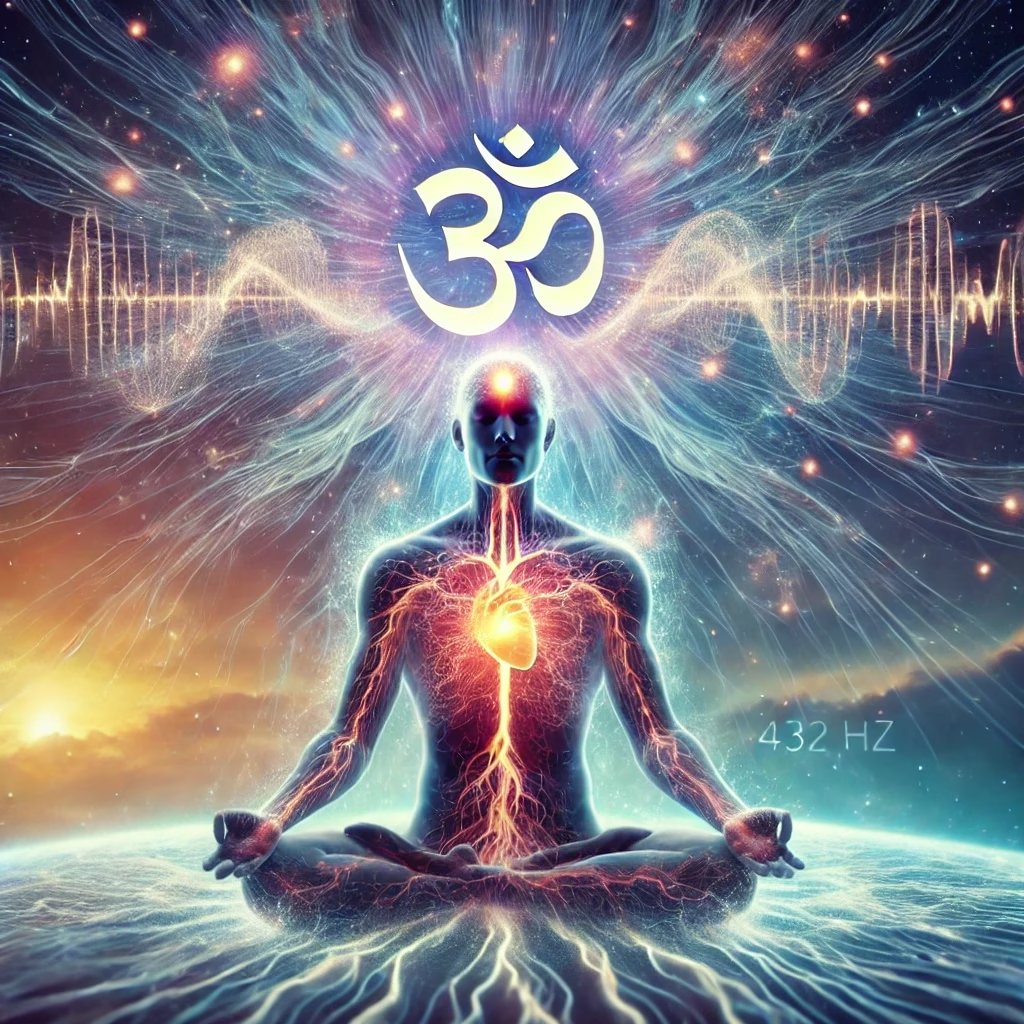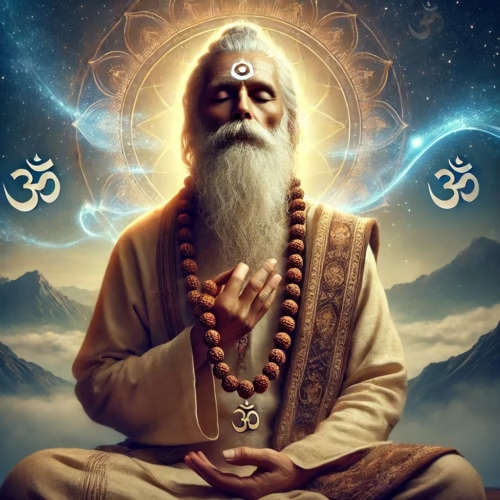
Om (or AUM) is one of the most widely recognized and highly esteemed symbols in the rich tapestry of Hindu philosophy. The past, present, and future are all contained inside one hallowed syllable, which is more than just a sound.
One of the shortest and most profound Upanishads, the “Maha Mandukya Upanishad”, explores the philosophical meaning of Om and reveals it to be the basis of all creation. The ultimate manifestation of consciousness and transcendence, ”Lord Shiva”, is frequently linked to “Omkar”, the formless, eternal reality that lies beyond Om. The union of the individual soul (Atman) and the universal consciousness (Brahman) is symbolised by Om and Omkar. This site offers insights into the eternal knowledge of Om and Omkar by examining their spiritual, intellectual, and practical importance.
Om / AUM/ॐ Significance:
The Cosmic VibrationThree syllables, A, U, and M, make up the mantra “Om”. Each one denotes a different state of consciousness:
1. A (Jagrat): The conscious state, in which our senses see the outside world.
2. U (Swapna): The dream state, where the mind creates its own reality.
3. M (Sushupti): The deepest sleep state, in which there is simply complete relaxation and no desire or dream.
4. Dot on ॐ (Turiya): The state which exists beyond the physical and mental domains, is symbolized by the quiet that ensues after the singing of Om. In the state of turiya, the individual self and the universal self become one. Understanding that everything is interconnected is the ultimate aim of spiritual practice.
According to the Mahamandukya Upanishad, Om is everything that was, is, or shall be. Om stands for the timeless and limitless reality that underpins the material world, transcending space, time, and causality.

Omkar: Since Shiva is the embodiment of Om—the formless, ageless, and all-encompassing reality—he is known as “Omkar”. He is the limitless consciousness that transcends all dualities; it is not constrained by any shape or characteristic.
Shiva is frequently portrayed as the “Nataraja” in Hindu iconography, the cosmic dancer who executes the dance of creation, preservation, and destruction. This dance represents the everlasting cycle of life and death, which is controlled by Om’s frequency. The earthly world is fleeting, and the ultimate truth is found in acknowledging our unity with the divine, as Shiva as Omkar tells us.
The core ideas of Advaita Vedanta (non-duality)in the Four Mahavakyas (Great Sayings)
These are important philosophical quotes from the Upanishads. Every Mahavakya communicates profound spiritual truths about the ego (Atman) and ultimate reality (Brahman), and they all originate from distinct Vedas.
1. Prajnanam Brahma (प्रज्ञानं ब्रह्र): Brahman is consciousness.
Citation: Rig Veda, Aitareya Upanishad
Meaning: Pure consciousness is the essence of reality. The ultimate truth, Brahman, is awareness itself rather than anything distinct from it.
2. Aham Brahmasmi (अहम् ब्रह्मास्मि): I am Brahman.
Citation: Yajur Veda, Brihadaranyaka
Meaning: The ultimate reality (Brahman) and the particular self (Atman) are the same.
3. Tat Tvam Asi (तत् त्वम् असि): You are That.
Source: Chandogya Upanishad, Sama Veda
Meaning: Every person’s nature is the same as Brahman, the highest consciousness.
4. Ayam Atma Brahma( अयम् आत्मा ब्रह्र): This Self is Brahman.
Source: Mandukya Upanishad, Atharva Veda
Meaning: The self (Atman) is the eternal and limitless Brahman, not a finite thing.
The Mahavakyas teach us non-duality (Advaita), which holds that the ultimate reality and the individual ego are one. They direct searchers toward enlightenment and self-examination. They aid in the dissolution of ignorance and ego, resulting in freedom from the cycle of birth and death.
The Importance of Om and Omkar in Spirituality
- Om is the voice of the universe, which binds all creatures and occurrences together. By bringing oneself into line with the cosmic rhythm, chanting Om promotes tranquility and harmony. The everlasting, formless reality that exists outside of the physical world is symbolized by Omkar. It reminds us that becoming aware of our unity with the divine is the path to ultimate release.
- Mindfulness and Meditation: Chanting Om during meditation promotes mental calmness, increased attention, and a closer relationship with the higher self. For spiritual development and self-realization, it is an effective instrument.
- Symbol of Unity: Omkar represents the oneness of everything. It teaches us that everything is one and that the differences we see in the world are only illusions.
The Science of Om

The enormous impacts of sound vibrations on the human mind and body are being investigated by modern research. A vibration that resonates at 432 Hz, which is thought to be the universe’s intrinsic frequency, is produced when Om is chanted. The neurological system is calmed by this vibration, which lowers tension and increases mental clarity.
According to research, reciting Om can: Reduce heart rate and blood pressure.
Decrease the stress hormone cortisol levels.
The “feel-good” hormones, endorphins, are produced in greater quantities.
Strengthen your focus and awareness.
These scientific discoveries support the Upanishads’ age-old wisdom, which has long acknowledged Om’s transformational potential.
Methods for Including Om and Omkar in Your Life
1.Every day, start your day by reciting Om 108 times. You can better link your energy with the cosmic mind by doing this.
2. Meditation: When you meditate, visualize Om. Become more spiritual by concentrating on the sound and its vibrations.
3.Mindful Living: Consider the significance of Omkar in your day-to-day existence. Aim to perceive the divine in every person and situation.
4.Study of Scriptures: To fully comprehend Om and its meaning, study the Upanishads and other spiritual writings.
Om’s Function in Yoga and Ayurveda
Om is regarded as the primal sound from which all other sounds originate in “Yoga”. Chanting it at the start and finish of yoga sessions is a common way to establish a sacred space and establish a connection with the higher self. The “chakras” (energy centers) are balanced by the vibrations of Om, which also support mental, spiritual, and bodily health.
The ancient medical system known as “Ayurveda” uses Om as a therapeutic tool to treat both the body and the psyche. The “doshas” (Pitta, Kapha, and Vata) are said to be balanced and the system brought back into equilibrium by chanting Om.
Modern Life with Om and Omkar
These days, in the fast-paced world, Om and Omkar knowledge is more important than ever. We often feel overwhelmed and disengaged by the incessant bustle and diversions of contemporary life. We can develop a sense of inner calm and a connection to the cosmos by implementing Om into our everyday practice.
The earthly world is fleeting, and true fulfillment comes from acknowledging our unity with the divine, as Omkar tells us. We can face life’s obstacles with poise and composure if we have this insight.
Final Thoughts
Om and Omkar are more than just sounds or symbols; they are the very essence of life. They serve as a reminder of the cosmos and the ultimate reality that exceeds space, time, and causality. Understanding and accepting Om and Omkar profound wisdom will help us get closer to discovering who we really are and attaining spiritual freedom.
Allow the timeless sound of Om to lead you on your path to spiritual enlightenment and self-realisation.
Om Namah Shivay 🙏

A fantastic writing very true very sacred and thought provoking.
Thank you so much for sharing kind words 🙂
Om Namah Shivay.
Om Namah Shivay 🙂 Thanks for subscribing . You will get the regular updates on my blog. I know this blog is just for you and i hope you enjoyed it. Did you?